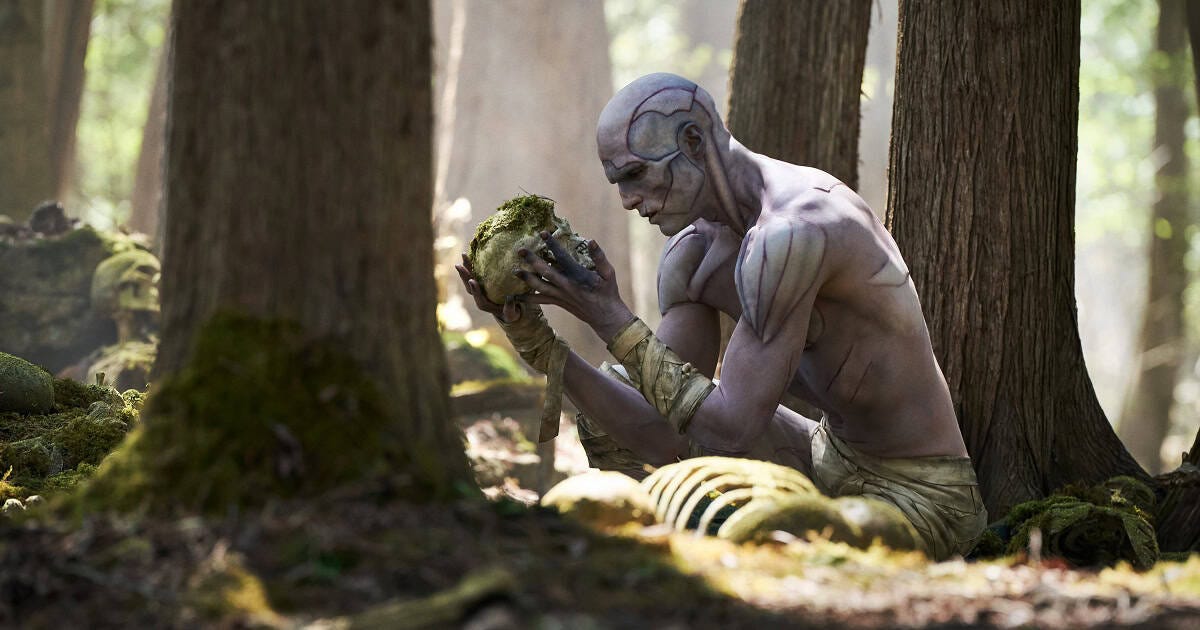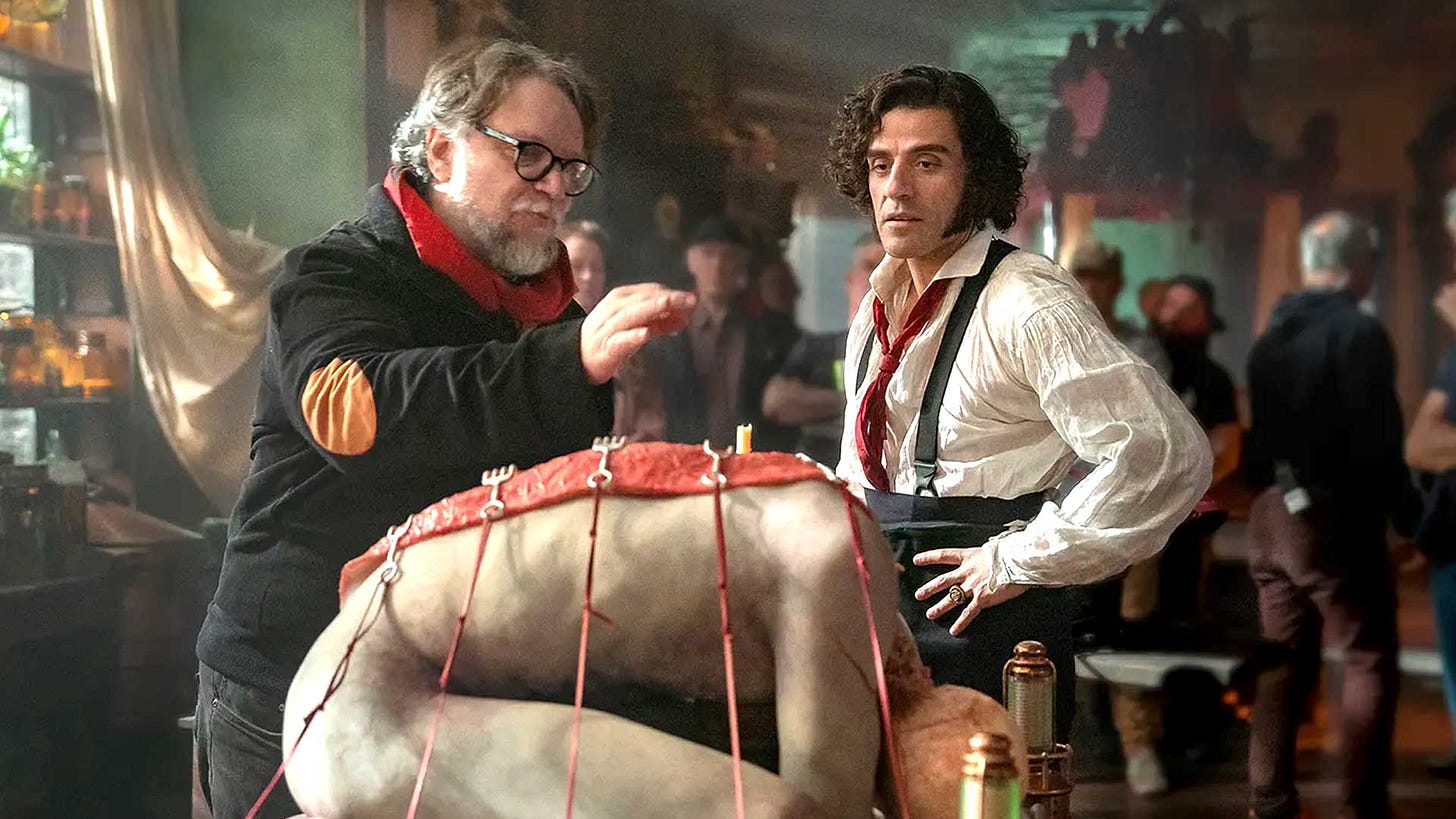Del Toro’s Frankenstein: Dead or Alive? | Dueling Reviews
We Debate The Merits of The Latest Reinvention of the Famous Monster
The latest take on literature and cinema’s most legendary monster has divided your friendly neighborhood movie nerds here at Cinemantics. Graham and Tyler duke it out across Europe — from the Arctic Circle to a seaside castle to the Swiss Alps — as they break down their thoughts on the hotly debated movie.
Tyler’s Review
Frankenstein’s creature has stalked the shadows of nearly every film by Guillermo del Toro. By his own admission, Mary Shelly’s Gothic novel is the Oscar-winner’s great creation myth; the very fable that has shaped his life and art. Most of his films grapple with the themes the novel explores: fathers — earthly and eternal — and sons; faith and reason; sin and redemption; and finding your place in a cold and cruel world.
All of these appear, too, in his latest film. And if you’re looking for Guillermo del Toro’s definitive take on the scientist and his innocent creation, then watch Pinocchio.
Putting aside the question of whether or not this story merited yet another adaptation, Del Toro’s Frankenstein is dead in the laboratory. It is an overstuffed, $120 million, two-and-a-half-hour made-for-television gothic melodrama that belongs at the backend of a streaming platform’s catalogue rather than on the big screen.
There’s plenty of blame to go around. Del Toro’s struggles with dialogue are on full display here, with some of the most ham-fisted, eye-rolling monologues I’ve heard in recent years. Mia Goth really struggles to make this dialogue believable. Oscar Issac delivers a British accent straight from the Dick Van Dyke School for Acting. Structurally, the movie tacks on unnecessary new characters and subplots for Christoph Waltz because … boo capitalism …, thereby creating a glacially dull, often uneven pace. Not a good sign for a two-and-a-half-hour movie!
On top of all of that, while Del Toro is still a master of light and attention to detail in production design, the Netflix curse has taken hold of him. This film is visually dull, flat, and often ugly. Even with its emphasis on real sets and miniatures, the movie’s Netflix-quality CGI (not a compliment) makes everything feel cheap and unworthy of the big screen. I might as well have watched this on an Apple Watch.
The one thing that is worth praising in this film is the Creature itself. Jacob Elordi’s physical and emotional performance is angelic, innocent, and wrathful all in equal measure. It’s a performance that demands attention and, hopefully, will receive it from awards bodies in the coming months. It’s a damn shame the rest of the movie fails to live up to his beautiful creation.
Verdict: Dead
Graham’s Review
Frankenstein and Guillermo del Toro seem like a match made in heaven between a director and subject material. And for large portions of the film, that match shines through. When del Toro is on his game, his Frankenstein is an incredible film. Now that he actually has his hands on the material that has shaped his career, his adaptation has moments that leap off the screen. But other portions of the film feel like a slog.
Del Toro tells Frankenstein like a story set in a world perpetually on the verge of overwhelming the characters that seek to dominate their surroundings. Seeing the film on Netflix doesn’t do it justice. You should see it on a big screen – so much of the film feels like del Toro creating worlds that feel huge, dwarfing the characters in ornately decorated, sprawling interiors and cold, vast expanses of wasteland.
But too much of the film has the typical Netflix production problems. The first half of the film that tells the creation of the Monster is soggy, with an extraneous subplot involving Christoph Walz not adding much to the story beyond a strained political subtext. And for as good a visual storyteller as del Toro is, there are some truly terrible visual effects moments that frustrate an otherwise gorgeous-looking film.
When del Toro is able to flex his visual muscles, the film really sings. One particular cringe-inducing montage showing Victor assembling the body of the creature is a delight to audience members with strong stomachs, demonstrating del Toro’s obsession with misshapen, disassembled, and reassembled bodies. As Tyler aptly noted above, Jacob Elordi also steals portions of the entire film as the Monster.
Del Toro’s decision to do away with much of the moral ambiguity of the Monster in the original book reduces his Frankenstein to a story about a misunderstood, tragic figure brought to life by a monomaniacal madman. It works on its own terms, and it follows del Toro’s previous works telling broad stories about good and evil. But it leaves the viewer feeling like something is missing, like the film is less than the sum of its parts. But perhaps that’s fitting for a story that has been repeatedly disassembled and reassembled like the titular monster himself.
Verdict: A reanimated Monster that’s missing something.
‘Frankenstein’ is now playing in select theaters and streaming exclusively on Netflix. Rated R for bloody violence and grisly images.






